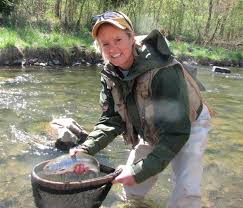Surveying Wildlife
This is Passport to Texas
Wildlife biologists collect data on game and non-game species using field surveys. One survey method does not fit all species.
For instance, deer surveys. We go out at night in the truck and spotlight for them. In that case we are looking for the animals themselves. There are other surveys that we do; for instance, otter surveys. In that case, it’s very rare to actually see an otter, and so we’re actually out there just looking for tracks and signs of otter.
Biologist, Heidi Bailey says they use the data to understand a species’ status and struggles; this includes threatened and endangered animals.
We want to determine if the populations are holding steady, or if we’re lucky, increasing, or if they’re on a decline we definitely want to know that as well.
Survey data on game species allow biologists to make recommendations regarding best management practices.
In some cases, it will help us to know if we need to change the bag limits. If we’ve got an over population of deer in a particular county and the density’s way too high for a healthy habitat, we may go ahead and increase the bag limit, or change season dates—we may lengthen the season or shorten the season. So, we’ve got a whole bunch of tools that we can actually manipulate the populations with based on the survey data.
More about wildlife surveys tomorrow.
The Wildlife Restoration Program support our series.
For Texas Parks and Wildlife…I’m Cecilia Nasti.



 Passport to Texas is a
Passport to Texas is a  Passport to Texas is made available by:
Passport to Texas is made available by: